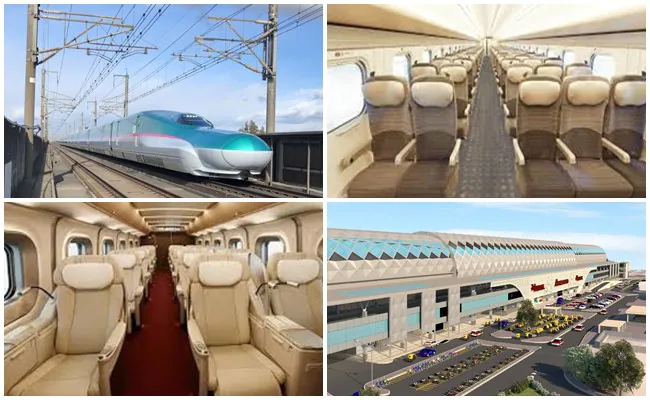How Will India’s First Bullet Train Corridor Reduce Country’s Dependence On Imports For Crude Oil

Mumbai-Ahmedabad high-speed rail corridor will cover 12 stations along the route
The country’s first high-speed rail project, spearheaded by the Railway Ministry’s special purpose vehicle – National High-Speed Rail Corporation (NHSRCL) will contribute in reducing India’s dependence on imports for crude oil, besides boosting infrastructure development. The high-speed rail will be powered by indigenous electric power, unlike diesel, petrol, or aviation fuel. It is a proven environment-friendly transport option, according to the NHSRCL, responsible for developing and implementing the bullet train project. (Also Read: Bullet Train Project: Agreement Signed With L&T For India’s Biggest Infrastructure Contract )
Data from the National High-Speed Rail Corporation’s website shows, the carbon emission for a 600 km trip per passenger by the high-speed rail is 8.1 kg, compared to 67.4 kg for car travel and 93 kg for airplane travel, according to a study by the International Union of Railways. This means that the carbon emission by the high-speed rail is far lesser than a car or an airplane. As the high-speed rail will be operated by electric power, it will contribute in reducing the country’s dependence on imports for crude oil.
The railway infrastructure project will be funded partly by the Japan International Cooperation Agency (JICA). The feasibility report of the Japan International Cooperation Agency was approved by the central government in late 2015. For the bullet train corridor, Japan’s official development assistance or ODA is Rs 79,165 crore, around 81 per cent of the project cost. This will be for a period of 50 years with 0.1 per cent interest and a 15-year moratorium.
The operation control centre for the Mumbai-Ahmedabad high-speed rail corridor will be situated at Sabarmati. Additionally, the Sabarmati Terminal will be the only station to have a multimodal transit hub with connectivity to Indian Railways, bus transit points, as well as metro stations. The Sabarmati station is being redeveloped on the basis of the public-private partnership (PPP) by the Indian Railways’ special purpose vehicle – Indian Railways Station Development Corporation. (Also Read: Bullet Train Project: Sabarmati Terminal To Be The Only Station With Multimodal Transit Hub )
Mumbai-Ahmedabad High-Speed Rail Corridor Stations:
The country’s first 508.17 km long bullet train corridor will be implemented between Mumbai and Ahmedabad, covering a total of 12 stations along the route. Once completely implemented, the bullet train will operate at a speed of 320 km per hour and will be similar to Shinkansen or Japan’s bullet train system. The 12 bullet train corridor stations en route are Thane, Mumbai, Virar, Vapi, Boisar, Bilimora, Bharuch, Surat, Vadodara, Sabarmati, Ahemdabad, and Sabarmati.
Mumbai-Ahmedabad High-Speed Rail: Distance, Journey Time
The high-speed rail will cover the entire journey between Maharashtra and Gujarat (including stoppages at all stations) in 2 hours and 57 minutes. This means that the journey between the two states, which currently takes eight hours will be reduced to under three hours.
The high-speed rail corridor will cover a distance of 155.76 km in Maharashtra, 4.3 km in Dadra and Nagar Haveli, and 348.04 km in Gujarat. Within Maharashtra, it will cover 7.04 km in Mumbai sub-urban, 109.06 km in Palghar district, and 39.66 km in the Thane district.
Source link

